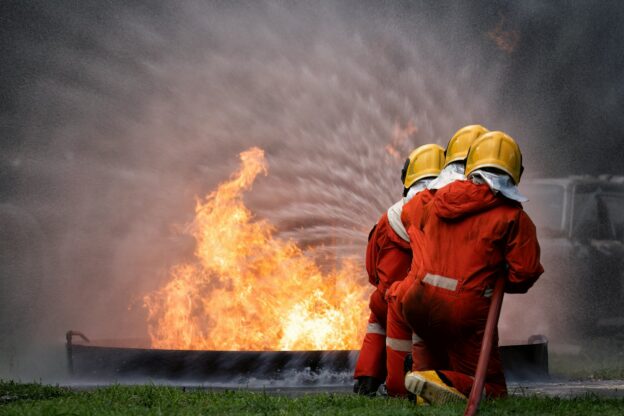This course will provide participants with a comprehensive understanding of the Chemistry of Fire, including how fire ignites, spreads, and can be extinguished. In addition, participants will gain insight with the different classes of fire, hazards associated to smoke, and essential fire safety techniques. This course will also cover the classification and safe handling of dangerous goods and hazardous materials.
Course Content
Lesson 1: What is a Fire?
- How Does a Fire Occur?
- Facts About Fire
- Why Does a Fire Need Fuel?
- Heat Energy
- Exothermic Energy
- Oxidising Agent
- Uninhibited Chain Reaction
- Conflagration: How a Fire Spreads
- Activation Energy
Lesson 2: Varieties of Flame Colors
- Composition of Dry Air
Lesson 3: What is Combustion?
- Complete Combustion
- Incomplete Combustion
- Rapid Combustion
- Flash Point
- Flammable Range
- Flashover
Lesson 4: Triangle of Fire
- Fuel
- Ignition Temperature
- Heat
- Accidental Fires
- Heat Energy
- Electrical Heat Energy
- Mechanical Heat Energy
- Chemical Heat Energy
Lesson 5: How Fire Starts?
- Conduction
- Convection
- Radiation
Lesson 6: Fire Extinguishing Technique
- Cooling
- Starving
- Smothering
Lesson 7: Classes of Fire
- Three Elements of a Fire
- Classification of Fire
- Classes of Fire
- Class A: Solid Materials
- Class B: Flammable Liquids
- Class C: Flammable Gasses
- Class D: Metals
- Class F: Cooking Oils and Fats
Lesson 8: Smoke Hazard
- Asphyxiant
Lesson 9: Exposure to Combustion Products
- Non-combustible Products
- Smoke Inhalation
- Smoke Particles
- Composition of Smoke
Lesson 10: Color of Smoke
- White Smoke
- Black Smoke
- Grey Smoke
- Steam
Lesson 11: Dangerous Goods and Hazardous Materials
- Definition of Dangerous Goods
- Dangerous or Hazardous? What is the Difference?
- Dangerous Goods
- Transportation of Dangerous Goods by Air into Malaysia
Lesson 12: Nine Classes of Dangerous Goods
- Class 1 – Explosives
- Class 2 – Gases
- Class 3 – Flammable Liquids
- Class 4 – Flammable Solids
- Class 5 – Oxidizing Agents and Organic Peroxides
- Class 6 – Toxic and Infectious Substances
- Class 7 – Radioactive Substances
- Class 8 – Corrosive Substances
- Class 9 – Miscellaneous
Lesson 13: Hazardous Chemicals
- HazChem Warning Plate System
- HazChem Identification Plate
- Emergency Action Code (EAC)
- HazChem Fire Suppression
- HazChem Safety Parameters
Lesson 14: Boiling Liquid Expanding Vapor Explosion (BLEVE)
Module 2: Fire Prevention
Duration
3 hours 9 Minutes
Module Objective
By the end of this course, participants will be able to:
- Understand the Fundamentals of Fire Chemistry
- Identify and Classify Different Types of Fires
- Assess Smoke Hazards and Combustion Byproducts
- Recognize Dangerous Goods and Hazardous Materials
You must log in and have started this course to submit a review.

